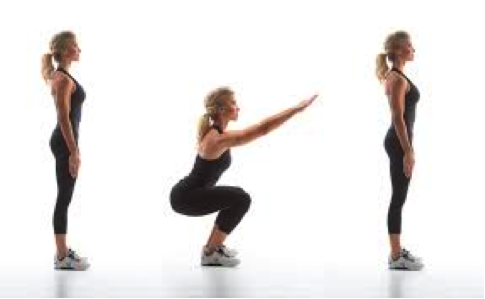Weight Training for Endurance Athletes
By Ashley Booth
To be the best at running long distances, you need to focus on running long distances. Many endurance programs focus on the modality for their race be it running, swimming, cycling or all of the above. And to make sure it’s working, we do it until it burns and we can’t walk come the weekend. But what if I told you that you could run faster and further by actually reducing the amount of time spent on the road, trail, or in the pool?
First, endurance sports are essentially body-weight movements performed over a long-time domain. If you increase your strength, these movements become a lesser proportion of your max effort in any of the given movements – i.e. it becomes easier because it doesn’t require as much strength relative to your overall capacity.
Second, the body wasn't engineered for repetitive movements at extreme frequency and intensities. This causes imbalances, injuries from overuse, and in turn, lack of effective muscular activation and function. These are all bad things if your goal is to do any sport for longevity.
To overcome these imbalances and build strength, endurance athletes must master a few key biomechanical movements to yield amazing benefits for both performance and orthopedic health: squatting, pressing, and pulling.
These movements are relatively easy to learn, pack some muscle armor onto the legs and posterior chain, and also emphasize core stability and posture as poor dynamic posturing can result in increased rates of fatigue during sport-specific performances. Stick to the basics, master the movements, and reap the benefits.
Single-leg movements can also be specifically advantageous for running and cycling. These movements include lunges, step-ups and single-leg deadlifts – all of which have demo videos on YouTube.
Endurance athletes are unilaterally dominant because of their focus on running and cycling – i.e. always moving forwards or backwards. As such, unilateral exercises are extremely effective to correct left to right imbalances.
Endurance Workout Example 1:
Stretches:
Couch Stretch 120 seconds each leg
Rocking ankle mobilisation 60 seconds
Lateral and Front Leg swings x 10
Strength:
A) Back Squat – focus on pushing the hips back rather than bending with your knees. Use a bar and weight only if competent with good air squats with perfect form.
5 @ 65% 1RM
5 @ 75% 1RM
5+ @ 85% 1RM

Always use a spotter when lifting heavy and if you do not know a 1 rep maximum, simply do 3 sets of 5 reps.
B1) Half Kneeling Palloff Press 3 sets x 10 reps, 1111 temp (each side), meaning take 1 second to push out away from your chest, hold for 1 second, take 1 second to pull back to your chest, and then hold for 1 second - Rest 60 seconds

B2) Front Foot Elevated Split Squat 3 sets x 8-10 reps - Rest 60 seconds

If you would like to get more tips or a tailor-made weight training program, contact Ashley Booth, Head Coach at Reebok CrossFit Asphodel. CrossFit is a form of cross-training that has been proven to be highly effective in unlocking athletic potential for everyone from novice to professional.







 Newsletter
Newsletter
 Online Store
Online Store






